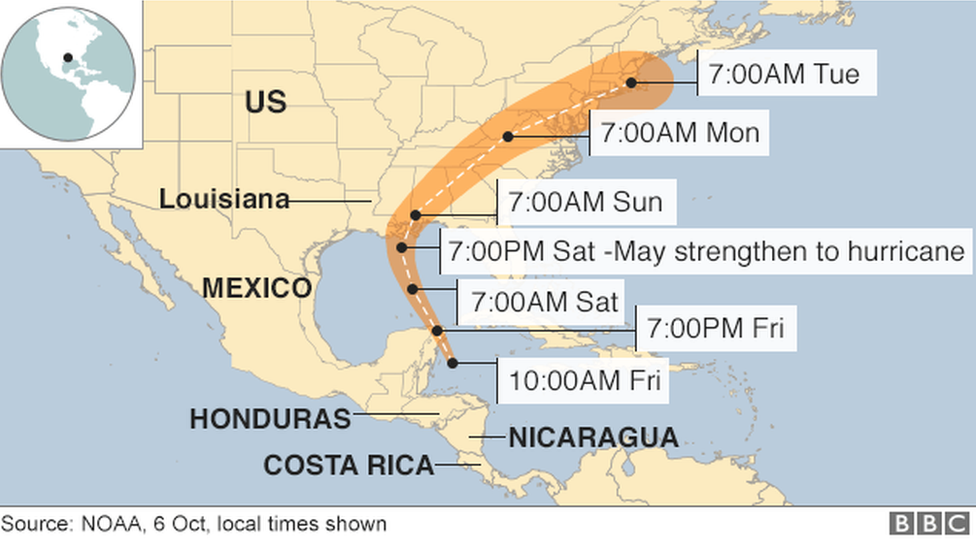
This article is more than
8 year oldParts of the city of New Orleans, devastated by Hurricane Katrina 12 years ago, are being evacuated.
Nate killed at least 23 people as it passed through Nicaragua, Costa Rica and Honduras as a tropical storm.
It has since strengthened to a Category 1 hurricane which, though not as strong as last month's Maria and Irma, will still bring strong winds and surges.
A hurricane warning has been issued for parts of the Gulf Coast from Louisiana to Alabama, amid warnings of life-threatening storm surge flooding.
Louisiana Governor John Bel Edwards has declared a state of emergency ahead of the hurricane, which is due to make landfall on Saturday night local time.
He said more than 1,000 National Guard troops had been mobilised with a number sent to New Orleans to monitor the drainage pumps there. "Anyone in low-lying areas... we are urging them to prepare now," he said.
A mandatory curfew from 18:00 (23:00 GMT) is in place in New Orleans.
"Our greatest threat... is not necessarily rain, but strong winds and storm surge," the city's Mayor Mitch Landrieu said.

Mexico's Yucatan Peninsula - home to the popular beach resorts of Cancun and Plana del Carmen - was braced for the storm on Friday night.
The governor, Carlos Joaquin, said that although the worst of the storm was expected to pass just east of the peninsula it could still bring torrential rains and flooding.
Oil companies were evacuating staff from platforms in the Gulf of Mexico that lie along the predicted path of the storm.
Nate caused heavy rains, landslides and floods which blocked roads, destroyed bridges and damaged houses as it tore through central America.
At least 11 people died in Nicaragua, eight in Costa Rica, three in Honduras and one in El Salvador.
Thousands have been forced to sleep in shelters and some 400,000 people in Costa Rica were reported to be without running water.